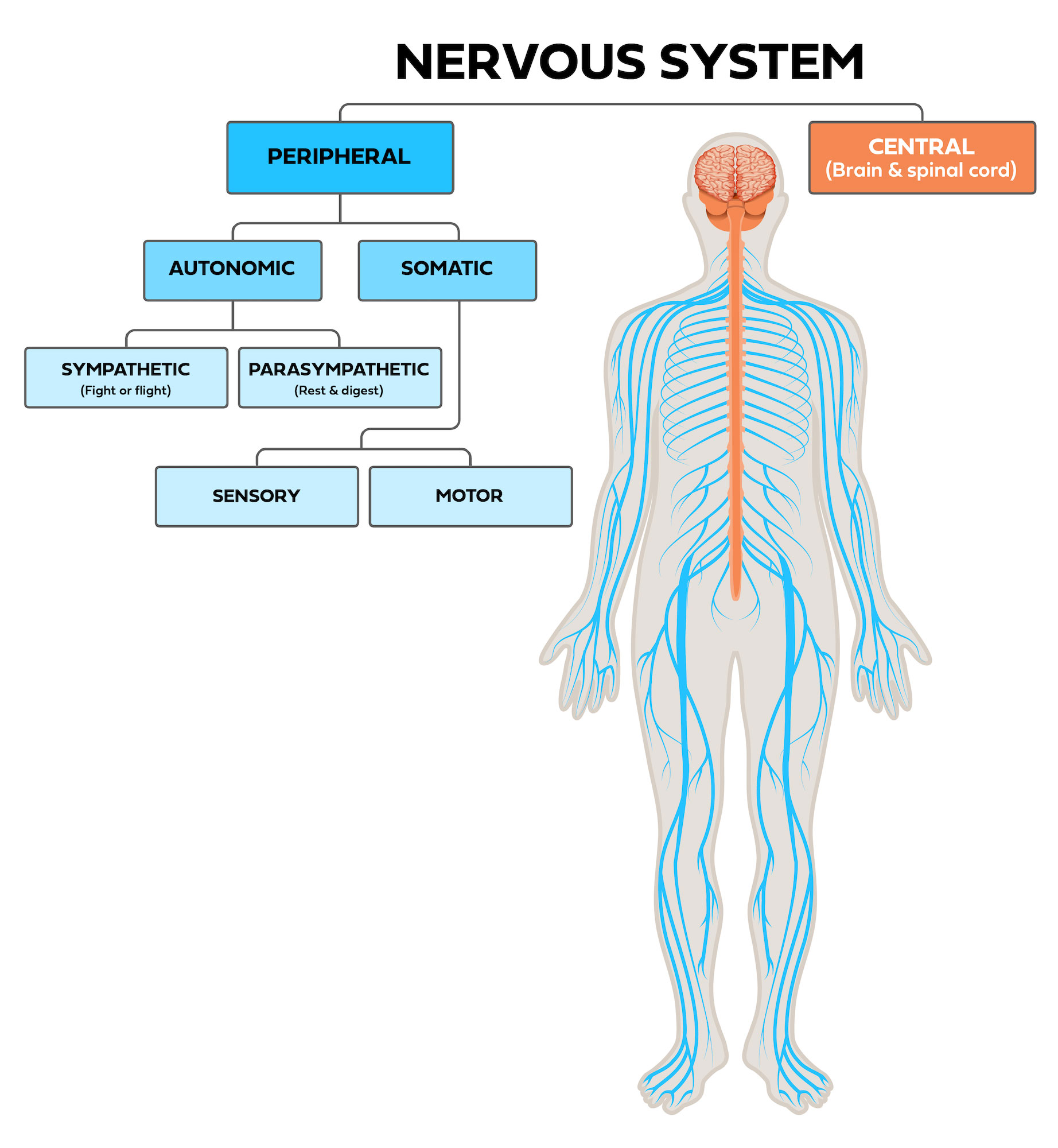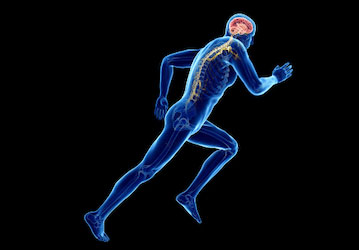What’s brain health and why should it matter to Military Service Members? Optimizing brain health is about improving physical, emotional, cognitive, and social well-being. A healthy brain is free from injury and disease and helps you properly respond to stress, focus on crucial tasks, make wise decisions, stay motivated, and maintain healthy relationships. The importance and popularity of this topic have grown so much that in 2020, DoD established the Warfighter Brain Health Initiative and Strategy to provide a framework to optimize brain health and cognitive performance.
HPRC offers this 3-part series of articles about brain health, starting with this one on the nervous system. Concepts around the topic of brain health can be complex, and this series explores cognitive function and scientific advances on brain health.
Unique and remarkable, your brain is the only organ in your body that controls multiple functions at the same time. For instance, when a marksman is about to shoot a weapon, their brain receives information related to sight and body positioning, sends information to execute fine movements with precision, regulates emotional responses, and narrows attention and focus—all at the same time. This is only possible because your brain doesn’t operate alone and connects with your entire body through many nerve branches. Together, the brain and nerves make up the nervous system.
Nervous system
The nervous system has two main divisions: central nervous system (CNS) that consists of your brain and spinal cord and peripheral nervous system (PNS) that contains all the nerves spread throughout your body.
Peripheral nervous system
Part 2 in this series of articles covers CNS in more detail, but keep reading to learn how PNS function relates to daily activities and how you can implement certain techniques to improve your performance. The main function of PNS is to carry information from your brain to your body and from your body to your brain. PNS consists of 3 subgroups: sensory, motor, and autonomic nervous system (ANS).
Sensory
Specialized neurons in the sensory nervous system allow you to perceive the world through your 6 senses: sight, hearing, touch, smell, taste, and balance. Different types of information simultaneously activate these neurons that in turn transmit the information to specific brain regions. Back to the example of the marksman about to shoot a weapon: At that specific moment, their brain combines information from their eyes, ears, and body positioning to help them perform well.
In addition to allowing you to perceive the outside world, the sensory nervous system also monitors your body internally and sends that information to your brain. For example, the vagus nerve, one of the key players in this internal monitoring, is constantly informing your brain about how fast your heart is beating, how full or empty your stomach is, whether your body is dealing with an infection, and other vital body functions. This nerve also plays an essential role in the communication between your gut and brain and helps to control the types of foods you eat and when to stop eating.
Motor
The motor nervous system travels in the opposite direction of the sensory system. It carries information from your brain to your body to initiate and sustain movement. The entire process is very fast, and it starts with you thinking about the action you want to perform. For example, patients who lost limb movements due to injury in their motor nervous system can move robotic arms connected to their brains through electrodes by thinking about the action they want to perform. The fact that movements start with thinking about the intended action explains why imagery is an effective tool to acquire and improve motor skills.
A healthy brain helps you properly respond to stress, focus on crucial tasks, make wise decisions, stay motivated, and maintain healthy relationships.
Autonomic nervous system
 Unlike the motor nervous system, ANS doesn’t rely on your conscious control. This system is active even when you’re not thinking about it, and it’s responsible for involuntary control of internal organs and glands. ANS has two main divisions—sympathetic and parasympathetic—with opposite effects on your body and behavior.
Unlike the motor nervous system, ANS doesn’t rely on your conscious control. This system is active even when you’re not thinking about it, and it’s responsible for involuntary control of internal organs and glands. ANS has two main divisions—sympathetic and parasympathetic—with opposite effects on your body and behavior.
- Sympathetic. You might not know its name, but you certainly know how it feels when the sympathetic nervous system (SNS) is active in your body. Imagine this: You completed your basic training, and now it's time to take your PFT. Your heart races, your mouth is dry, your muscles feel shaky, and you feel restless. All those symptoms result from the activation of SNS. SNS is well-known for its role in the stress response leading to the release of adrenaline, preparing the body for action. For this reason, SNS is also known as the fight-or-flight response. Regardless of the external source of stress, the bodily response is the same. Many other situations also activate SNS such as an upcoming deadline, excitement about a project, imminent threat or danger, or an important athletic competition that’s about to start.
- Parasympathetic. Parasympathetic nervous system (PNS) counterbalances the activity of SNS: It slows down your heart rate, increases blood flow to your digestive system, and promotes an overall sense of relaxation. For this reason, PNS is also known as your rest-and-digest system.
SNS and PNS can’t be highly active at the same time. When one’s up and running, the other has low activity. Your brain monitors the activity level of both systems to ensure that they’ll never be highly active at the same time. Every time an external stimulus activates SNS, PNS will shut down. The opposite is also true, and many breathing techniques can help you voluntarily activate PNS to inhibit SNS during periods of acute stress.
Learn more
Part 2 in this series explores the central nervous system and the amazing organ residing inside your skull: your brain. Meanwhile, try practicing imagery and breathing techniques to experience those ways you can partner with your nervous system to improve your performance. Find out more about the Warfighter Brain Health Initiative and Strategy in this article from health.mil too.
